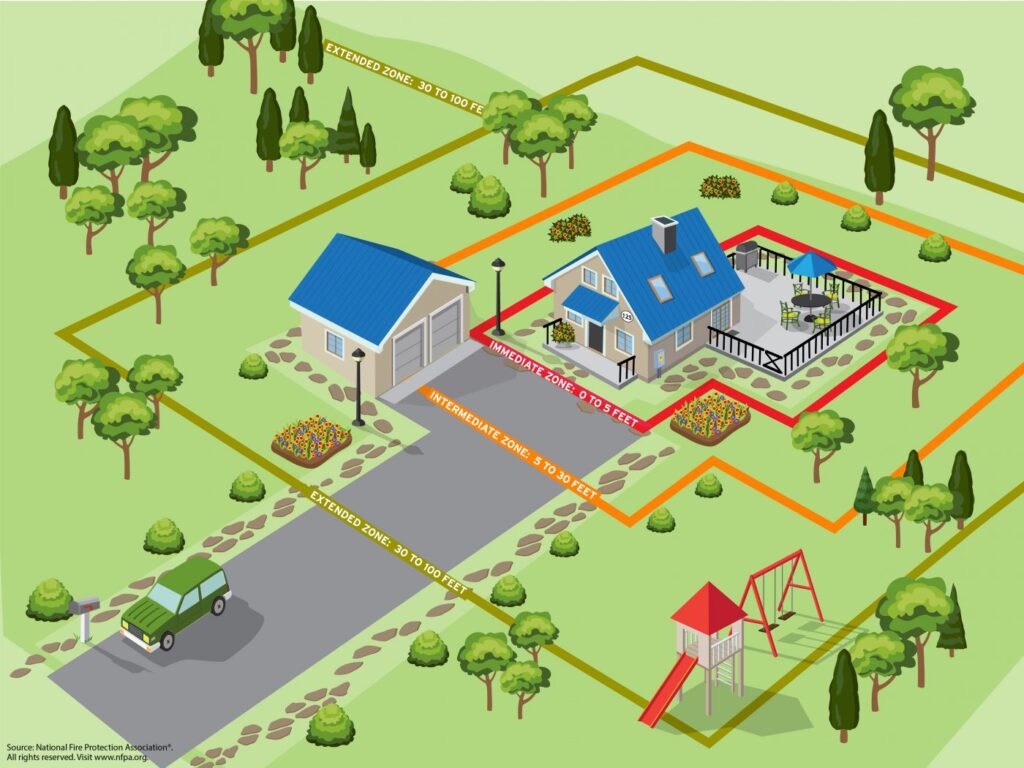Wildfire season is to the Western U.S. as hurricane season is to the American Southeast. Much as with tropical storms, the impact of such disasters is also far from equal. Yet preparation and mitigation could help reduce the impacts on all Americans within a fire’s potential path. Here are six things to know about wildfire season, wildfires, and mitigating against them.
2020: 10.1 Million Acres Burned, Nearly 10,000 Homes Destroyed
According to the National Interagency Coordination Center, 58,950 wildfires burned 10.1 million acres in 2020. Nearly 40% of these acres were in California.
In all, more than 17,900 structures across the U.S. were destroyed by wildfires in 2020, including 9,630 residences, 7,255 minor structures, and 1,119 commercial/mixed residential structures.
Wildfires are Expensive
The high price of wildfires isn’t just in the millions of dollars it costs to fight them: While the Department of the Interior and the U.S. Forest Service are estimated to have spent roughly $2.27 billion in suppression costs in 2020, those wildfires cost insurers an estimated $7 to $13 billion.
There are also many hidden costs. As the U.S. begins to come out of the pandemic, and as more Americans get vaccinated, tourism will return to record levels. Yet smoke-filled skies and burning forests are natural deterrents to tourists.
More Wildfires and More Smoke = More ER Visits, More Indirect Deaths
Another cost that rises when wildfires rage is indirect health care expenditures. According to research published by the American Economic Association, when fine particulate matter in the air rises even in the short-term—whether from man-made pollution or that caused by smoke and ash—health care costs, medical use, and elderly mortality rates spike as well.
A September 2020 study by scholars with the Global Food, Environment and Economic Dynamics group further estimates that one day of smoke-filled skies would result in an additional 1,200 deaths that would not have happened otherwise and an additional 4,800 ER visits among the elderly.
Wildfires Devastate Communities of Color the Most
If at first it seems that affluent, white communities are most often in fire’s path, the devastating effect of wildfires is far from equal. In fact, communities that are majority Black, Hispanic, and Native American are 50% more vulnerable to wildfires than other census tracts. Whether those communities consist of farm and vineyard workers—as in Washington state in 2014 when language barriers prevented Hispanic farmworkers from receiving evacuation notification from authorities—or Native Americans (fire risks are higher on tribal lands) when it comes to wildfires, communities of color are most at risk.
In addition, roughly 12 million of the more than 29 million people living in U.S. census tracts where wildfires are likely to occur lack the resources to prepare for and recover from wildfires—whether that means funds for tree trimming and brush clearing before, temporary relocation during, or rebuilding after a fire.
$1 Spent = Many Dollars Saved
When it comes to preparing for disasters, and guarding against them, the amount spent on mitigation saves multiples in recovery. According to researchers from Loyola Marymount and Stanford universities, $1 spent on preparedness is worth about $15 in terms of the future damage it mitigates.
Even more conservative estimates, and especially for wildfires, are significant. Looking at 11 states that received wildfire mitigation funding from 1993 to 2016 revealed the average savings ratio was $3.22 saved for every $1 spent.
Mitigation efforts saved an estimated $913 million worth of homes and infrastructure during the 2018 Buffalo Fire in Colorado.
Such numbers have borne out of late. Years spent building fire breaks and reducing hazardous fuels across 900 acres near Silverthorne, CO, meant that when the Buffalo Fire approached the area in 2018 it stopped short of 1,400 homes—and saved an estimated $913 million worth of homes and infrastructure.
0-5-30: Protecting Homes from Fire
When mitigating against fires near a home, the first 5 feet matter most: The immediate zone—0 to 5 feet from the house—is most vulnerable to embers.

Experts at the National Fire Protection Association advise homeowners to first prep the home itself, including clearing gutters of leaves and needles, installing 1/8-inch metal mesh screening on exterior vents, and replacing missing shingles. Then, clear anything within 5 feet of the house that could burn—plants, leaves, needles, and firewood piles included.
The intermediate zone—5 to 30 feet from the farthest exterior point of the home—should be kept trimmed and clear. Remove debris piles from near propane tanks, keep grasses and lawns trimmed to just 4 inches, and keep an 18-foot space between the crowns of trees. Here too, sidewalks and driveways should be used to create fire breaks.



